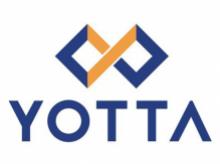Only 48 Percent of Digital Initiatives Are Successful: Gartner
According to the 2025 Gartner CIO and Technology Executive Survey,
on average, only 48 percent of digital initiatives meet or exceed business
outcome targets. Gartner gathered data from 3,186 CIOs and technology
executives (including 1,376 CIOs in EMEA) in 88 countries and all major
industries. This survey was supplemented with insights from 1,126 executive
leaders outside of IT (CxOs).
A cohort of CIOs and CxOs, known as the "Digital
Vanguard", has the highest achievement rate, where 71 percent of their digital
initiatives meet or exceed outcome targets.
"This digital vanguard distinguishes themselves from the
rest of CIOs and CxOs because they co-own digital delivery," said Raf
Gelders, VP, Research, Gartner. "CIOs and CxOs are equally responsible,
accountable and involved in delivering the digital solutions their enterprises
need. This is a radical departure from the traditional paradigm of IT delivery
and business 'project sponsorship' that predominates in most enterprises."
"Behind every digital vanguard CxO, a digital vanguard
CIO is guiding and enabling CxOs and their teams to co-lead and co-build
digital delivery with IT," said Daniel Sanchez-Reina, VP Analyst, Gartner.
"Digital vanguard CIOs nurture their peers to become digital vanguard
CxOs. Those CIOs make it easier for their CxOs to lead digital with them and
for business area staff to build digital solutions together with IT."
"CIOs' success now depends on their CxOs' success. To
succeed at the next phase of digital initiatives, CIOs need their CxOs to work
together and co-lead with them. So their fortunes are intertwined: one cannot
succeed without the other," said Sanchez-Reina.
CIOs Seek Compelling, Easy-to-Use Platforms for All Technologists
Over 80 percent of EMEA CIOs polled said they expect to
increase their investments in cybersecurity, AI/GenAI, and business
intelligence and data analytics in 2025.
"Digital vanguard CIOs do not invest in these technologies to
be used by their IT staff only. They also make them easy to use for potential
or actual technologists outside of IT," said Gelders. "On average,
there is 26 percent of business/corporate area staff outside of IT dedicated to
building, implementing or managing technology. Many of these technologies
naturally lend themselves to easing the burden of work enterprise-wide,
accelerating time-to-market and time-to-value, and fostering the accountability
of CxOs."
At the other end of the spectrum, 43 percent of EMEA CIOs
said they expect to decrease their investment in legacy infrastructure and data
center technologies. This is a trend that has become more common in recent
years, mainly due to migrating to cloud-based solutions. That compares with 33
percent who said they expect to increase it, which can be attributed, in part,
to those organizations that acquired on-premise infrastructure to experiment
and produce GenAI solutions.
EMEA CIOs Are Not Prioritizing Tech and Digital Leadership Skills
Development Across the Enterprise
Only 14 percent of EMEA CIOs surveyed prioritize building a
technology workforce enterprise-wide (beyond their own IT departments) in 2025.
That will limit the enterprise's ability to get the most from their digital
investments. It condemns them to perpetuate the low number (48 percent) of
digital initiatives that meet or exceed their business outcome targets.
Furthermore, just 19 percent of EMEA CIOs said they will
prioritize sharing technology leadership with other business areas, a paramount
must-have to grow the digital vanguard.
"To become a digital vanguard, CIOs in EMEA need to
prioritize four areas - making digital platforms easy for the workforce to
build digital solutions; teaching them the interdependencies between technology
and business; helping business leaders become innovation leaders at digital;
and expanding digital skills beyond the IT department," said Sanchez-Reina.































Leave A Comment